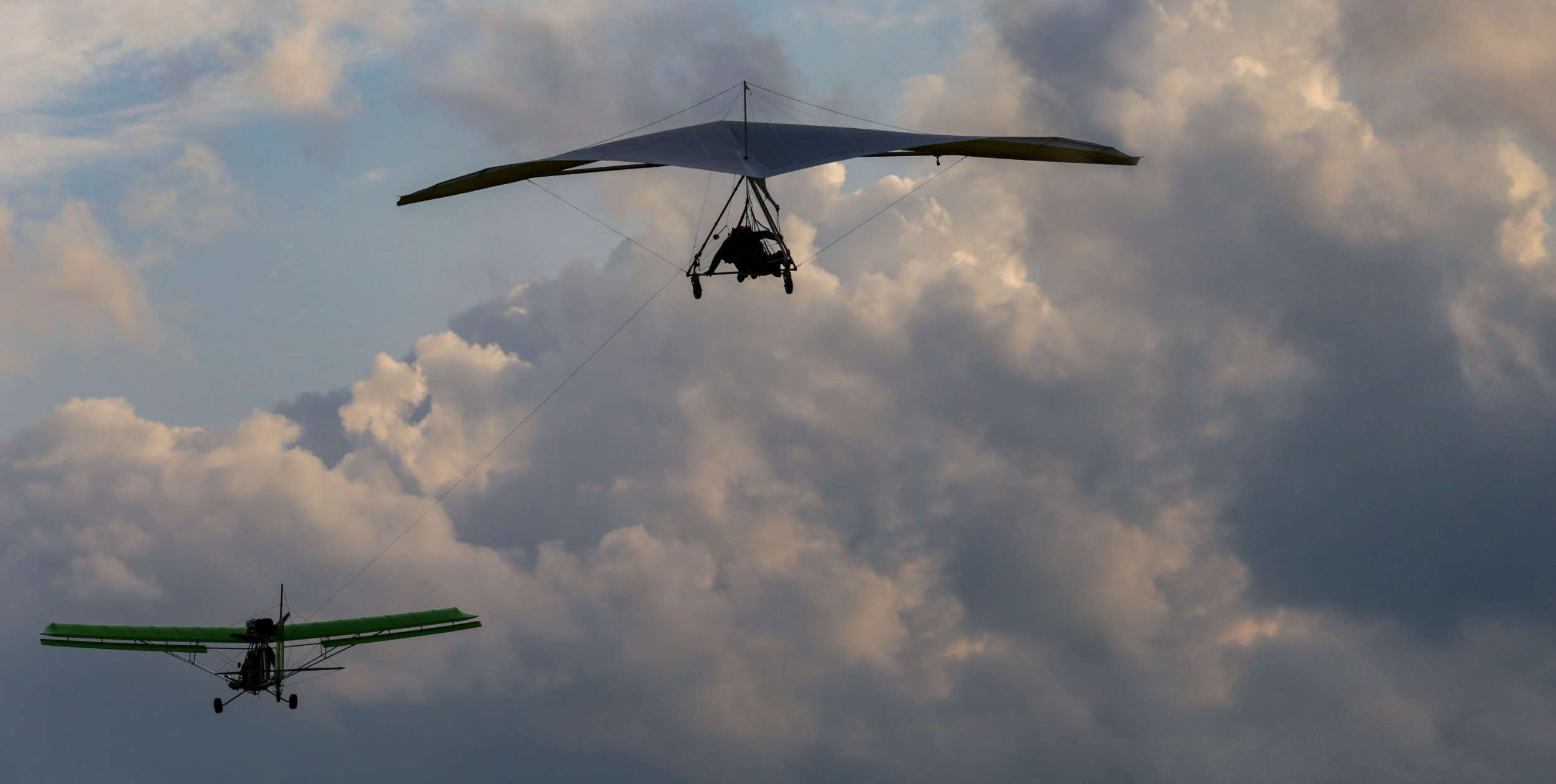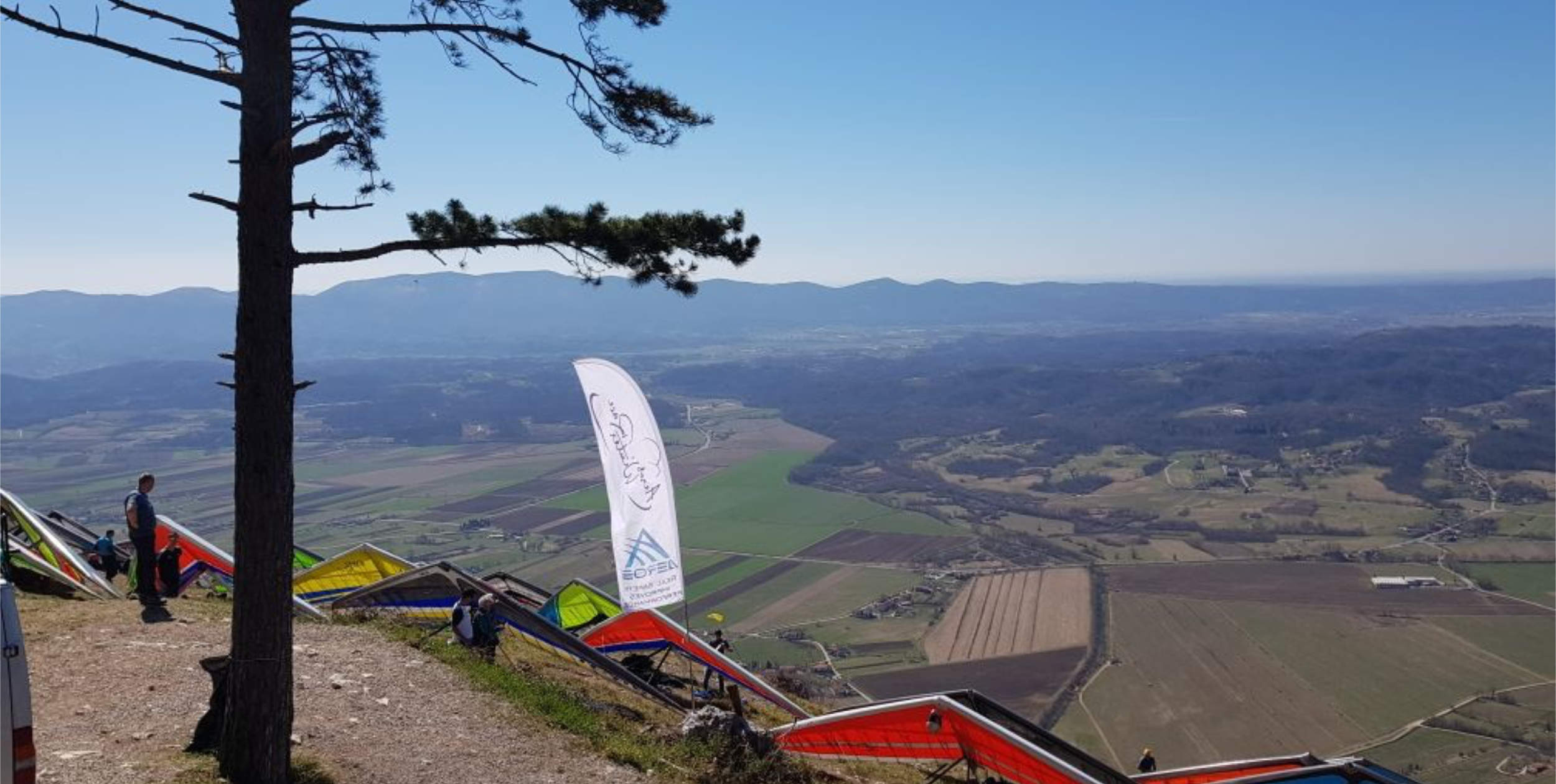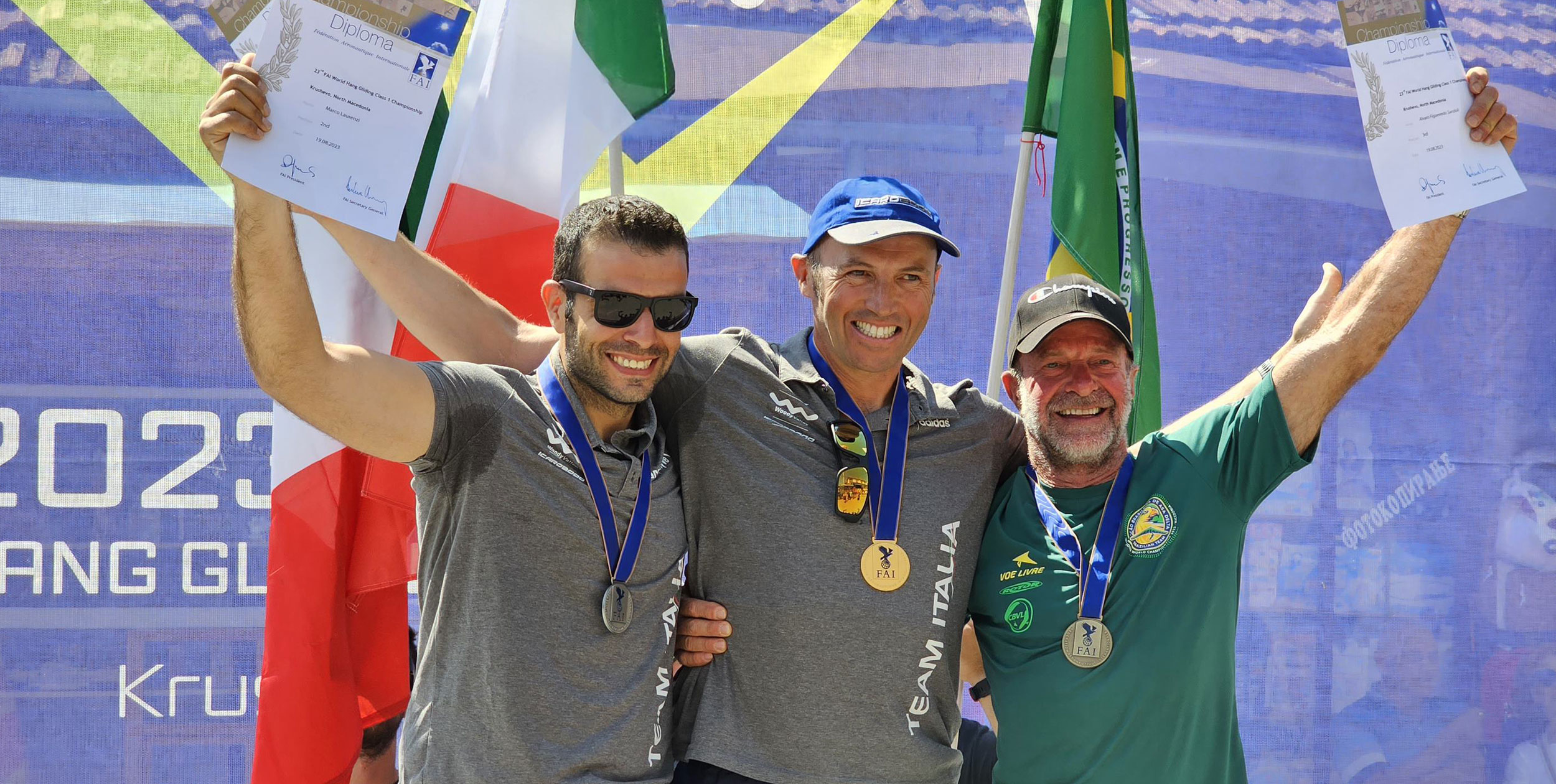Hang gliding legend Dennis Pagen reviews the Bautek Twist hang glider
Bautek’s Twister was on of the first kingpostless hang gliders on the market, but it has yet to grab much international attention. Bautek has spent little effort marketing outside of Europe. They have been content to serve the large European market which has historically formed the nucleus for the global market.
All that is changing. Bautek has a competitive topless glider in the Twister, and it is aptly named, as we shall see. Its performance is good and some special engineering renders it most desirable in terms of safety. In addition, the strong US$ in relation to European currency makes the price attractive for us Americans looking for a top performing, safe topless glider.
I took delivery of the Twister at Monte Cucco, Italy where I flew it in the Pre-Worlds meet. Then the factory graciously let me keep it for another two weeks of peripatetic flying in the Alps where I tested its mettle in non-competition mode. This report is the result of some 30 hours of airtime in widely varying conditions and regimes from light air scratching to high-wind racing.
BAUTEK’S BACKGROUND
Before we talk about the glider, let me fill you in on the company, Bautek. They have been in business since 1971, developing parts for airplanes and sailplanes. In 1981 they designed and produced their first hang glider, the Fafnir. This wing was followed by the Saphir, Zephir, Pamir, Milan, Milan Racer, Sunrise, Astir and Twister. All of these gliders except the Milans and the Twister were bowsprit gliders; now you recognize them!
The Bautek name comes from the German word bau which means construction and technik. The company heads are the Zimmer twins, Horst and Harold. Horst is the engineer; Harold is the business whiz. Bautek is near Trier, in the Moselle wine country of southwest Germany next to the Luxembourg border. The factory is a large new building constructed specially to build gliders efficiently.
GLIDER PERFORMANCE
Let us dispense with performance factors right away, for although performance is of utmost importance we have many other items of interest to report on the Twister.
My experience on the Twister indicates that it climbs extremely well. Both in the Pre-Worlds and later free flying (with as many as 50 gliders at Laragne, France) I was never outclimbed when sharing a thermal. The Twister’s thermal climbability is what I would claim to be its strong point.
At normal glide speeds I was keeping with the tight comp gliders. I maintained the glider in stock configuration, so at higher speeds I could not keep up with the gliders with lowered sprogs. But if we were to compare the stock Twister to other stock gliders, I believe we would find equity.
The Twister handling is also one of its fine points. The glider is tuned without a lot of sail and batten tension, similar to the Laminar. This setup promotes good handling and the ability to slow down well in thermals. The VG system has lots of travel with three long pulls required to go full-tight. The result is the best of both worlds: good loose VG handling and drum-tight maxed-out glide with a tight VG.
Harold told me they worked for a year to perfect the Twister’s handling by altering tube flexibility, sail tension, tip twist, airfoil profiles, batten tension and crossbar holdback configuration. The glider has a curved down basetube to let you hang lower and a keel pylon to make your hang point higher. With all of these factors, Bautek believes they have found the best compromise of handling, performance and landing ease for the Twister.
One last point on performance: the Twister was flown this year by factory pilot Jobst Baeumer in the German Nationals. He won the meet against top pilots such as Bob Baier and World Champion Guido Gehrman.
THE BAUTEK FEATURES
Now comes the fun part, at least for us design buffs. But even pilots who don’t know the difference between an upright and a downtube will find interest here, for some unique safety features are highlighted.
The Twister has an automatic pitch stability system which is a welcome feature on a topless glider. Here’s how it works. If turbulence unloads your side flying wires, or if your glider is pitched nose down to the point the side wires off-load, the tip struts automatically twist upward.
This action simulates reflex bridles (found on kingposted gliders) kicking in or an up elevator control on an airplane.
This automatic twist device, known as the Safety Pitch System, works with a lever attached to the side cables which is activated by a spring concealed inside the crossbar.
When the side cables go slightly slack, the spring rotates the lever which pulls a cable routed to the tip struts and configures to tilt them upward. Careful testing has shown the system to work effectively at realistic flying speeds and weights.
Another system working in a similar manner is connected to the hang strap to activate the tail on Guggenmos’ RCS. The Zimmers tried such a system, but felt that the side cables are more sensitive to potential pitchover events. You can see the Twister’s tip twisting trick by rotating the glider’s nose up and down in the wind. When the wings lift the twist goes down; when the nose is dropped so the side wires go slack, the twist increases.
The next item of interest is the crossbar itself. It is not made of carbon as is the crossbar of most topless gliders. The Zimmers checked with their sailplane manufacturer associates and found out how critical the construction and inspection of carbon was. They opted to make a crossbar out of aluminum using a truss system.
A truss system consists of a main compression beam and a series of supports designed to keep the compression beam in column or handle tension loads. Most bridges that aren’t suspended bridges are truss systems, for a truss is the lightest form of construction for a given load requirement.
The truss arrangement in the Twister consists of a couple sets of outriggers and cables that stiffen the crossbar much like the mast of a sailboat. The result is a crossbar just as strong and light as the cantilever carbon ones at less than half the price. In addition, this crossbar is easier to inspect for damage compared to a carbon spar and the Zimmers feel this is an important advantage when it comes to the resale of the glider.
Another interesting feature on the Twister is the upcurved plastic tips. These tips are similar to those seen on the Stealth, but developed independently. In fact, the Zimmers called on their friends at the Mercedes factory and used their wind tunnel. By carving wood tips and trying many different shapes they were able to come up with the minimum drag design.
Other features on the Twister include the nose zippers which free the Mylar at the nose so it doesn’t get bent when packing up as it does on all other gliders. Next is the lower surface netting at the tip which relieves pressure and prevents downward inflation at the tip at high speeds (low angles of attack).
This feature renders the glider more yaw stable. Tests have shown that closing one side makes the closed side create more drag and lag behind. We have already mentioned the basetube which is about one inch diameter for lower drag with a nice rubber grip and an internal cable for safety. Finally we should point out the aluminum keel which is tapered to look sexy and reduce drag. It also swings down like a kickstand to aid in setup if you so desire.
FLYING THE TWISTER
We have previously mentioned the twister’s nice handling characteristics, but let us look at other factors. While free flying I put the glider through some standard tests. First I tried stalls, both with the VG on and off. In all configurations I couldn’t get the glider to drop its nose as long as I started the stall from minimum sink speed.
The glider would simply mush or go into falling leaf mode. What this means to flying is the glider may have less tendency to nose in after a landing flare, and may be less apt to rotate nose down if stalled in strong turbulence. A month after flying the glider, Bautek told me that they’ve positioned the uprigths 11 cm to the rear of the keel tube to improve landing further.
Another thing I tried was slipping turns and hands-off turns. The slipping diving mode was very controllable and predictable. I like to use this feature for landing setup and it came in handy during a flight in France when I chose to alight in a small wheat field along the Durance river.
By putting a glider in a coordinated bank and letting go, you can check for a glider’s spiral stability. Most designs are slightly unstable which means that the bank angle increases. On the Twister the glider slowly leveled out which means that no high-siding is required in smooth thermals.
I found the Twister to have lots of positive pitch bar pressure. In fact, it was too much for my taste when diving full-tilt to goal. The factory said the sprogs could be safely lowered to relieve some of this pitch pressure and this is one topless glider on which I’d be willing to do so. Again, since reviewing the glider, Harald tells me that they have optimised their sail tension to slightly lessen bar pressure at 60 km/h.
Takeoffs and landings are straightforward on the Twister. I had no unusual experiences launching in either calm or strong conditions. The glider is relatively light (73.7 lbs/ 33.5 kg) for those light-wind launches. When landing you’ll find the glider to slow admirably and the only awkward landings I produced were in turbulent conditions when I flared early.
SETUP AND OTHER DETAILS
The Twister setup is fairly conventional, so we’ll only point out a few unique features. First is the sprog and tip strut setup. The sprogs usually fall in place and all you have to do is place a transverse batten (which engages the battens on either side of the sprog) in the slot at the end of the sprog, then zip up the under surface. The tip strut is similar: you push it in to slide over a swiveling (up and down) stud, pop on the transverse batten to hold it in and zip up.
The next interesting matter to note is the tip batten. There is no need to fumble inside the sail trying to locate the batten on a stud, for it is fixed to the leading edge and folds in its mid-span. To attach the batten you simply put the outside end in a loop then straighten the batten slightly past centre.
The batten pockets are one side forty-fived, and the lower surface battens were the second easiest in the business (Airwave’s are the best with their forward retainer loop). The battens have new end plugs with steel springs..
Finally, I wish to mention the nose cone which is the only one I’ve ever found which I could put on every time cleanly without pulling the nose down. The nose zippers allow the Mylar inserts to stop closer to the nose than on other gliders, so the nose cone can be a bit smaller and it is perfectly shaped.
This nose cone detail is indicative of the attention to detail characteristic of Bautek’s engineering on all their gliders. They make their own upright basetube junctions which are nicely rounded and faired in. The uprights come with a grip patch for those sweaty palm days. The rear haulback is a simple ring that loops over a small block with a recess for the cable thimble. All these little details serve to satisfy.
Perhaps the nicest detail is the sail. It is made in-house by Bautek and is very clean. The glider looks sleek with its long smooth lines ending with the graceful tips. I had many pilots checking out my glider wherever I went. Internally the sail has three top to bottom straps and two ribs per side to hold the airfoil in shape (this is a safety factor for negative angles of attack as well).
Finally, the best news about the sail is that your choice of colours comes at no extra charge (Bautek maintains six leading edge and sixteen lower surface colours). In addition, you can get a sail with the Bautek wave pattern on the lower surface in your choice of colors at no extra charge. The upper surface sail comes with Dimension Polyant’s Power LL cloth (you’ve seen it before, it’s the one with the black pinstripe).
I loved the Twister in almost every way. It is one topless glider I would like to own, if only because of the warm, safe feeling it affords. Of course, climbing above other gliders also piques the love interest. I would recommend this glider highly to pilots who want a fun, high-performing topless glider without the worries. The best bit I have to report is the price: $5000 which compares nicely to other topless gliders on the market.
This review appeared in issue 60 of Cross Country Magazine
• Got news? Send it to us at news@xccontent.local. Fair use applies to this article: if you reproduce it online, please credit correctly and link to xcmag.com or the original article. No reproduction in print. Copyright remains with Cross Country magazine. Thanks!
Subscribe to the world’s favourite hang gliding and paragliding magazine







